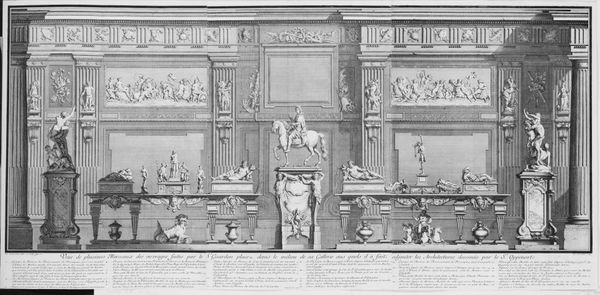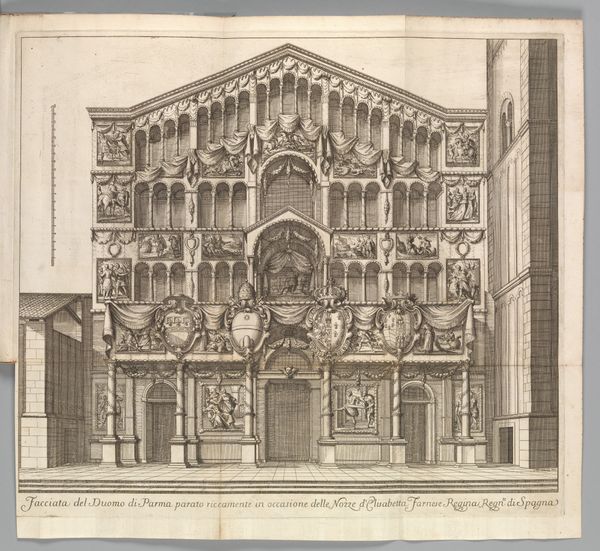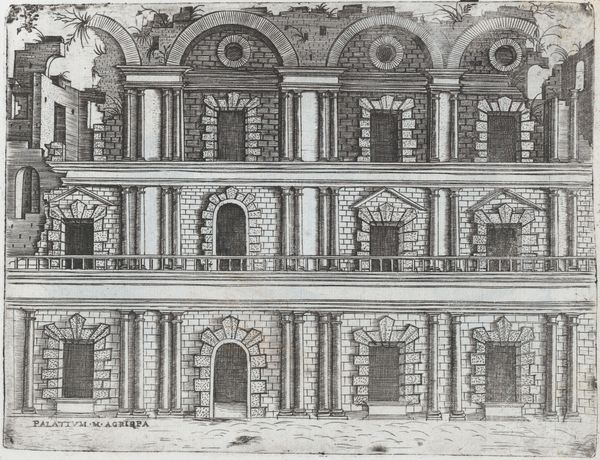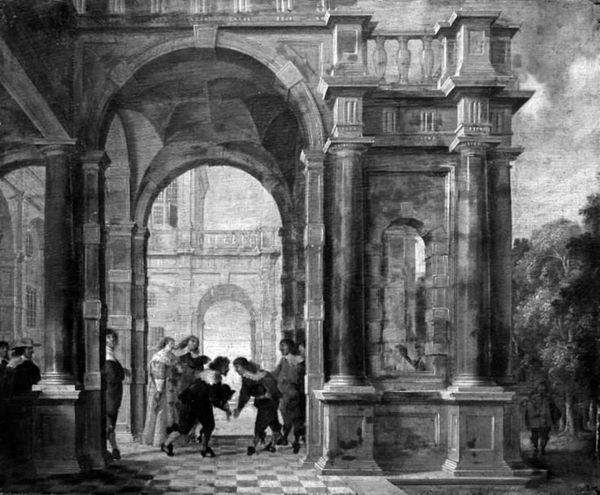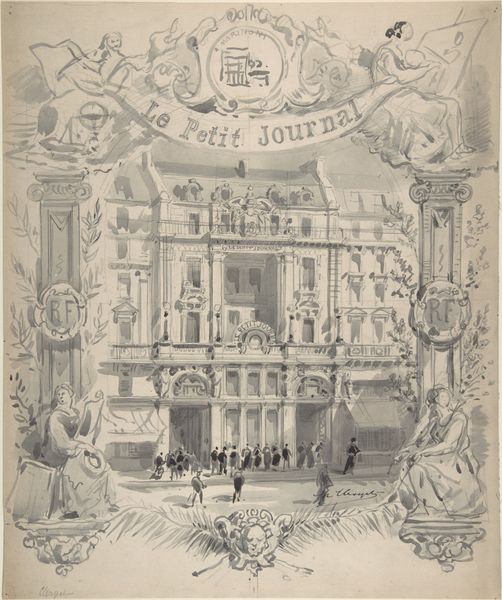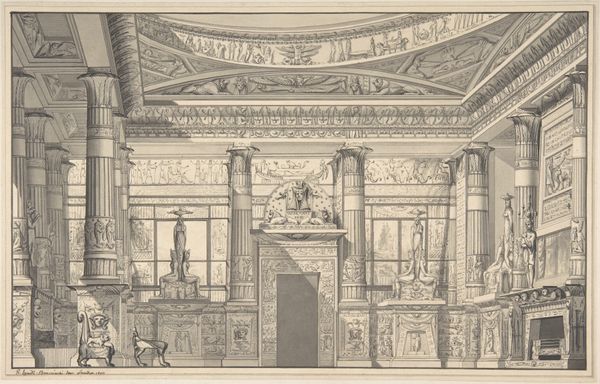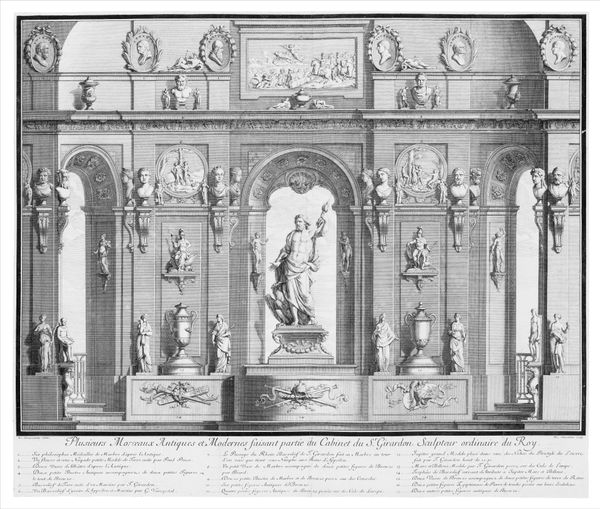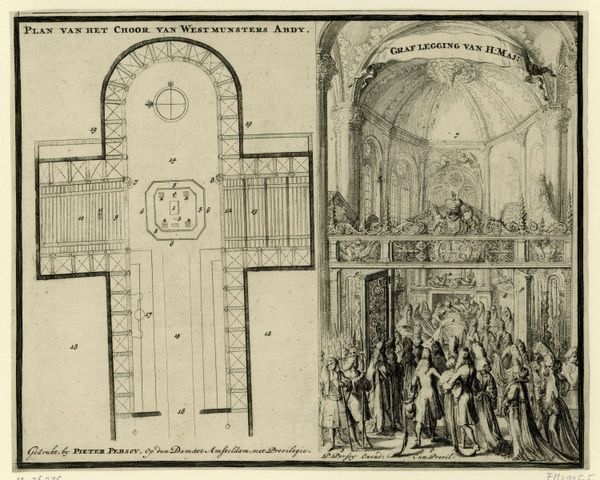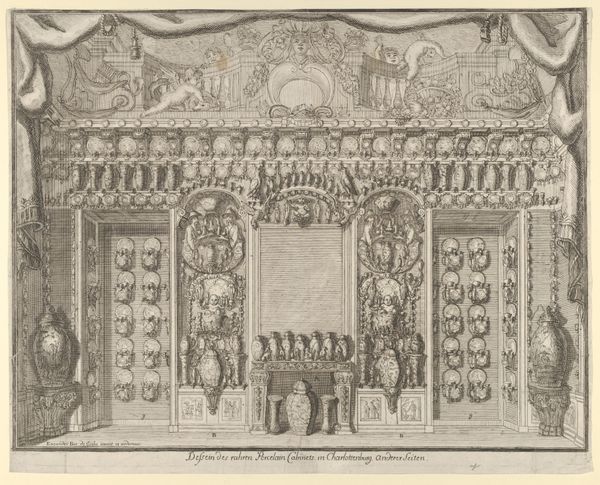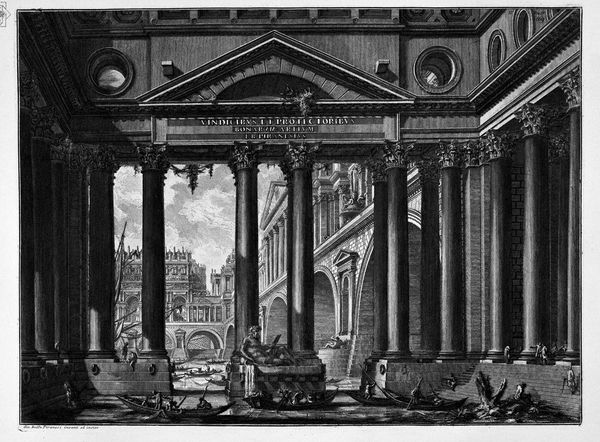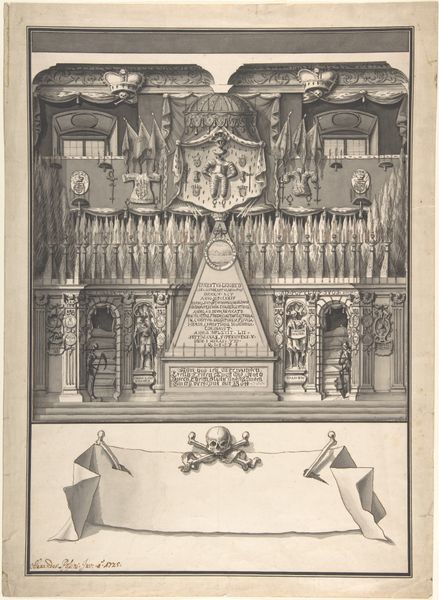
Model of the dance house in Basel
0:00
0:00
hansholbeintheyounger
Kunstmuseum Basel, Basel, Switzerland
drawing, graphite, architecture
#
drawing
#
sculpture
#
charcoal drawing
#
11_renaissance
#
geometric
#
graphite
#
cityscape
#
history-painting
#
charcoal
#
graphite
#
architecture
Copyright: Public domain
Editor: This is the “Model of the dance house in Basel” by Hans Holbein the Younger. It looks like a drawing in graphite and charcoal, meticulously crafted. It gives the impression of a building brought to life through a sort of architectural rendering. How would you interpret this? Curator: It is indeed a fascinating piece! What strikes me most is how Holbein used drawing to simulate a three-dimensional architectural space. It's as though he’s not just representing the dance house but building it, stroke by stroke, in front of our very eyes. Does it make you feel as if the drawing escapes the boundaries of its support, turning into a sculpture? Editor: It definitely feels like a sculpture in some ways, or an attempt at architectural visualization using just drawing materials. Curator: Exactly! The level of detail—the figures, the columns, the arches—it's not just documentation, it's speculation. Holbein wasn't simply recording a space. Instead, he invites us to consider how drawing can construct entire worlds. And for the city of Basel it was really an ephemeral dream come true. Editor: An ephemeral dream made real! Curator: Yes, it feels transient because dance, performance and celebration—like charcoal—are all short lived by nature. Editor: That is such a thought provoking metaphor, I would have never figured it out by myself. Thank you for pointing out those details. Curator: My pleasure. And I admire how your curiosity shaped our encounter today. It proves, in the end, that looking at art is actually an intellectual exercise.
Comments
No comments
Be the first to comment and join the conversation on the ultimate creative platform.
